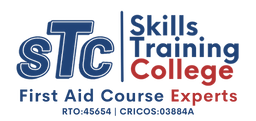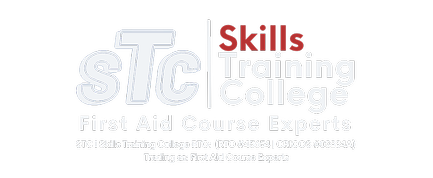How To Give Wheelchair CPR
Giving wheelchair CPR to people in wheelchairs takes more preparation but is the same as providing CPR to a non-wheelchair-bound person.
As with any medical emergency, immediately dial 000 and call an ambulance, then begin your First Aid response.
One method of preparing a cardiac arrest casualty in a wheelchair for CPR is to follow these steps starting with your DRSABCD in a slightly modified manner.
- Remove any hazards or dangers to yourself and the patient.
- Try to get a verbal or physical response from the patient.
- Call for an ambulance & assistance.
- Open with head tilt/chin lift and clear the airway of any obstruction to begin CPR.
- Look, listen and feel for breathing, even if only very shallow.
Video: https://www.youtube.com/watch?v=GOvT4mPRGRA
Make Room Behind The Chair – Apply The Brakes – Remove Any Accessories
- Armrests, anti-tip devices, food tray,
- Watch for IV lines connected to bags or bottles of fluid.
- Make sure there isn’t a catheter bag tethered to the chair before you attempt to remove the patient.
For A Single Responder To A Person In A Wheelchair
Video: https://www.youtube.com/watch?v=r_CjffVACHY
- If possible, secure the casualty to the chair around the chest and chair back with a belt or sheet.
- Stand behind the chair.
- Hold on to the handles.
- Carefully lower the chair backwards to the floor, remembering to bend at the knees to prevent you from receiving a back injury.
- Providing support under the armpits, pull or slide the person out of the chair where possible. If the patient is too heavy or big to separate from the chair, give CPR in the chair.
Two First Aiders
- One on each side of the chair
- Kneel on one knee with the foot at the rear of the chair on the ground
- Place your arm under the casualty’s armpit and hold onto the handle.
- The other hand supports the casualty’s head.
- Lower the chair backwards to the ground
- Remove the patient from the chair and begin CPR as is standard practice.
Video: https://www.youtube.com/watch?v=hklE3qyHiIs
There are other methods whereby mechanical lifting equipment can be used; however, we are concentrating on the situation that option is not available and immediate action is required.
At all times, it is vital that the First Aider practices and uses good manual handling techniques. There is no point trying to save a life if you endanger yourself and then require the assistance of another First Aid responder.
Do not attempt to lift, pull, or slide any person beyond your strength capabilities. Avoiding injury to the casualty and the First Aider is the priority.
Try not to bang the casualty’s head when you lower the chair backwards. This will take practice with a dummy. The heavier the patient in the wheelchair, the harder it will be to control the descent due to gravitational laws, so paying attention to where the head is in relation to the handles of the wheelchair and their proximity to the floor is essential to prevent any head injuries.
Unless there is no other option, only do CPR in the chair if it has a hardback.
This technique will not be suitable for motorised wheelchairs designed not to be tipped over and are too heavy even to attempt to do so. If the patient is in a motorised wheelchair, you will have to get assistance as it will require two or more people to get them onto the floor to perform CPR.
Do not do this in a plastic chair as the plastic legs and backs can snap and cause grievous injuries to the patient and the First Aid responder, requiring a higher priority level of First Aid that defeats the intended purpose.
First Aid Refresher Course
Take a FACE refresher course to update your First Aid skills. Times change, and advances in medicine always see the old ways being updated or outdated entirely and new practices introduced. Make today the day you look at our nationally accredited courses and book your place on the next available course near you. Check out our FACE Blog page for First Aid and Medically related topics that might be of interest.


